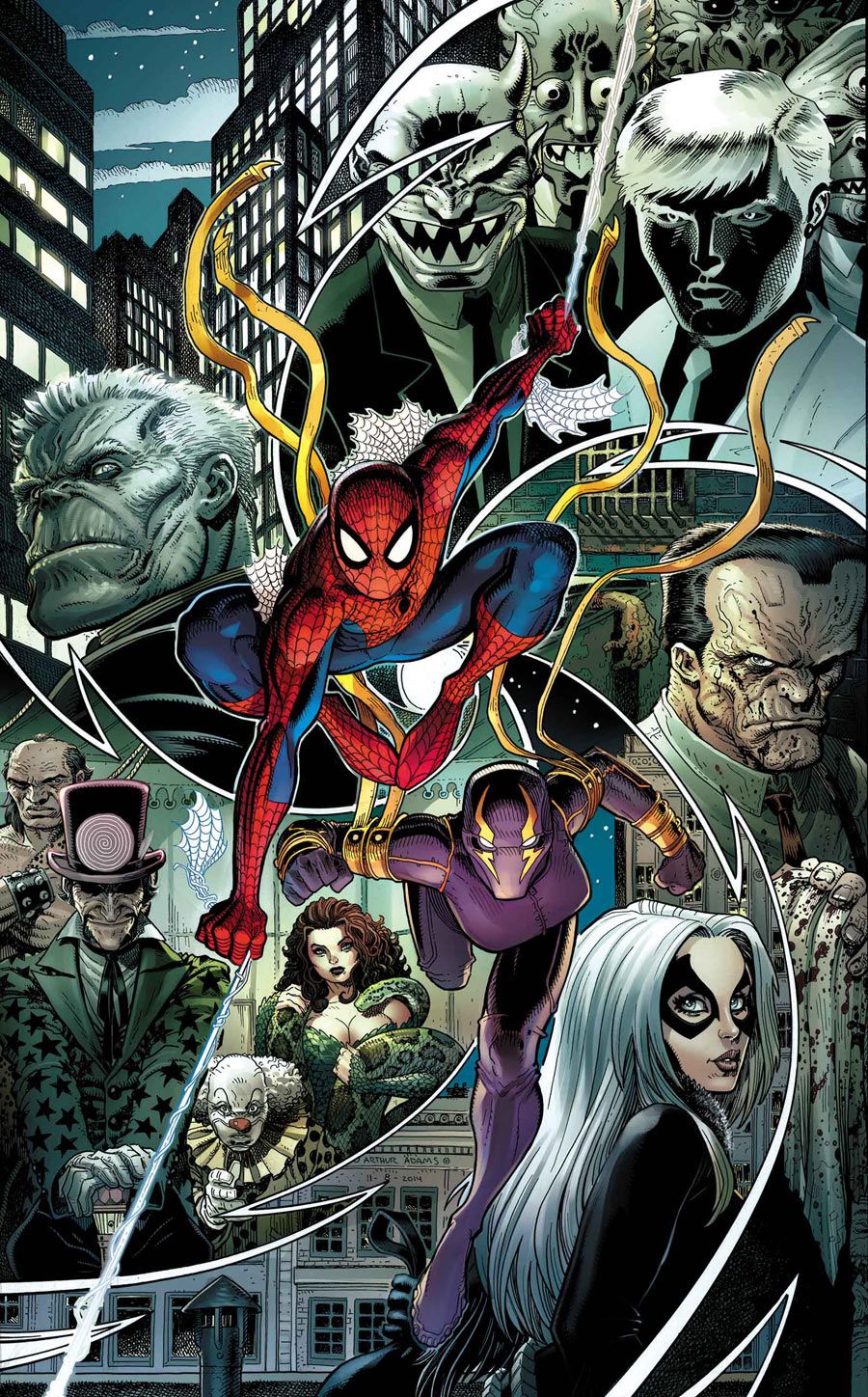Writer Gerry Conway returns to script the adventures of Peter Parker once more in the first chapter of "Spiral," which launchs in his "Amazing Spider-Man" #16.1. Artist Carlo Barberi, inker Juan Vlasco, colorist Israel Silva and letterer Joe Caramagna join Conway and the end result is a satisfying comic that passes through the threshold of an event but manages to remain condensed.
The scope of this event is hinted at in Arthur Adams' gorgeous, poster-ready cover that clips the space into electric-tinged segments. Each segment depicts a crime boss: Mister Negative, Hammerhead, Black Cat, Ringmaster, Princess Python (from the Circus of Crime) and Tombstone. In the story, Spider-Man learns that lines are being drawn as the underworld's leaders prep for a gang war. No multiverses, no brain transplants, just good old-fashioned, marginally-powered villains fighting to try and claim cash and business flows for themselves with Spider-Man looking to crash it all.
Conway puts Spider-Man on the outside looking in, choosing to bring in Yuri Watanabe as the point-of-view, at least to a particular end. Watanabe is given motivation to don her Wraith identity, which Conway uses as an opportunity to both define her personality and to shape post-"Spider-Verse" Spider-Man's philosophy and dedication. The once-and-current Spider-scribe slips right back into writing one of his most popular charges, and the background of a gathering gang war highlights the humanity involved in day-to-day craziness. In his return to Spider-Man, Conway gives readers a solid, enjoyable start, though forcing it in between "Amazing Spider-Man"#16 and #17 seems odd. I can understand not wanting to disrupt the flow of the story but certainly giving this series its own space might have been more widely appealing and less exclusionary.
Behind Adams' strong cover, Barberi brings energy and agility to Spider-Man on par with the work of Humberto Ramos and Mark Bagley. Barberi's action poses indicate a possible reverence for McFarlane, but he keeps the art clean and the panels more geometric. He focuses his work into wrinkles in the costume and settings for the story rather than piling in detail. His storytelling is sharp and his perspective angles, straightforward enough to deliver the most bang per panel, with Vlasco doing a nice job of keeping all of the lines crisp.
Barberi's Tombstone isn't nearly as intimidating or as hideous as he has historically been portrayed, right down to the traditional flat-top cut not being so flat. That said, Tombstone is still distinct and easily recognizable, as Silva and Caramagna provide nice visual boosts through their handiwork. In the issue, what was once thought balloon content is now captured in caption boxes, which makes it a bit more work for readers and slightly disconnects the words from the characters. Caramagna does a fine job of keeping the boxes properly appointed, but the comic would have an even more classic feel if Conway were able to employ thought balloons.
In addition to coloring the action of the issue, Silva drops gradients into the backgrounds to give every page a more lush appearance. It's a subtle choice, but one that helps shade this tale with unexpected mystery and unforeseen darkness creeping in from the edges.
Even though it's the start of a multi-part saga, "Amazing Spider-Man" #16.1 doesn't feel ominous or foreboding. Conway pitches a story that seems appealing and hits the ground running. All readers need to know about Spider-Man, Tombstone, Wraith or Mister Negative is all right here, no flashbacks or origin tales required. Just grab a webline and get to swinging alongside everyone's favorite friendly neighborhood Spider-Man; too bad the neighborhood part is in a downward spiral.

